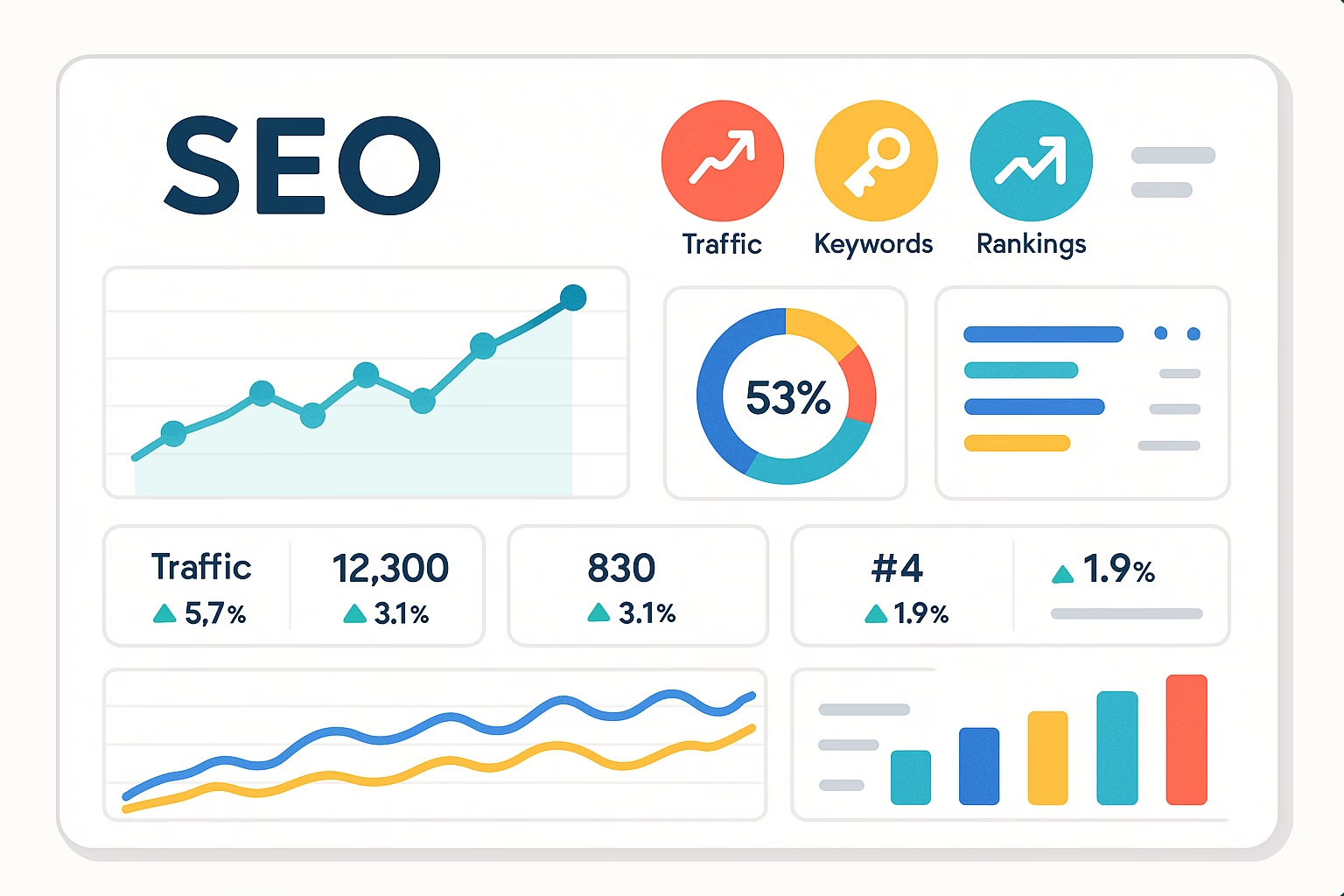Writing SEO-Optimized Blog Posts That Actually Rank (2025)
Introduction
Great content alone won’t rank in 2025. Search engines like Google have evolved, and so must your blogging strategy. SEO-optimized blog posts are designed to satisfy both algorithms and human readers. This guide explains how to structure your post, where to place keywords, how long your content should be, and what writing styles rank better—all backed by modern SEO techniques.
What Is SEO Blog Writing?
SEO blog writing means creating content that is:
- Helpful and relevant to the reader
- Well-structured and easy to read
- Strategically optimized with keywords and meta data
- Valuable enough to attract backlinks and engagement
Step-by-Step Guide to Writing SEO-Friendly Blog Posts
1. Start with Keyword Research
Identify your main keyword using tools like Ubersuggest, Google Trends, or Ahrefs. Choose a long-tail keyword with good search volume and low to medium competition. Need help with keyword tools? Read our Keyword Research Guide.
2. Define the Search Intent
Are users looking for a tutorial, a comparison, or a list? Your content format should match what they’re expecting. In 2025, Google prioritizes user intent even more than keyword presence.
3. Outline Before You Write
A solid outline helps organize your thoughts and improves readability. Use headers (H2, H3, H4) for sections like Introduction, Tips, Examples, Conclusion, FAQs, etc.
4. Write a Compelling Title (H1)
Your title should be under 60 characters and include the main keyword. Example: “SEO Blog Writing Tips for 2025.”
5. Optimize the Meta Description
Although not a ranking factor, meta descriptions improve click-through rates. Keep it under 160 characters and summarize your blog’s value.
6. Use an Engaging Introduction
Hook readers in the first 100 words. Mention the main keyword early and set clear expectations about what the blog will deliver.
7. Structure Your Content for Readability
- Use short paragraphs (2–4 lines)
- Add bullet points and numbered lists
- Break text with images, tables, or infographics
- Use descriptive subheadings with related keywords
8. Use Internal and External Links
Link to your own posts (like our On-Page SEO Guide) and authoritative external sources (make sure external links open in new tabs).
9. Optimize Images
Use keyword-rich file names and alt text. Compress images to improve speed. Consider using AI tools to generate high-quality visuals that support your content.
10. Insert Keywords Naturally
Use the primary keyword in:
- Title (H1)
- Meta description
- First 100 words
- At least one subheading
- Alt text of images
- Conclusion
11. Content Length and Depth
Longer content generally ranks better. Aim for 2000+ words and cover the topic thoroughly. Include FAQs, examples, comparisons, and callouts to increase value.
12. Add Schema Markup
Use schema for articles and FAQs to increase visibility with rich results. This can improve CTR and help your blog stand out.
13. Include a Clear Call to Action
End with a CTA to keep users engaged—invite comments, suggest related posts, or offer a download.
Common SEO Writing Mistakes to Avoid
- Keyword stuffing
- Ignoring mobile users
- Not using headers or bullets
- Writing without an outline
- Skipping internal linking
Conclusion
SEO blog writing in 2025 is about depth, clarity, and usability. Focus on user experience while aligning your content with search engine rules. The more value and clarity you offer, the better you’ll rank.











Comments 1